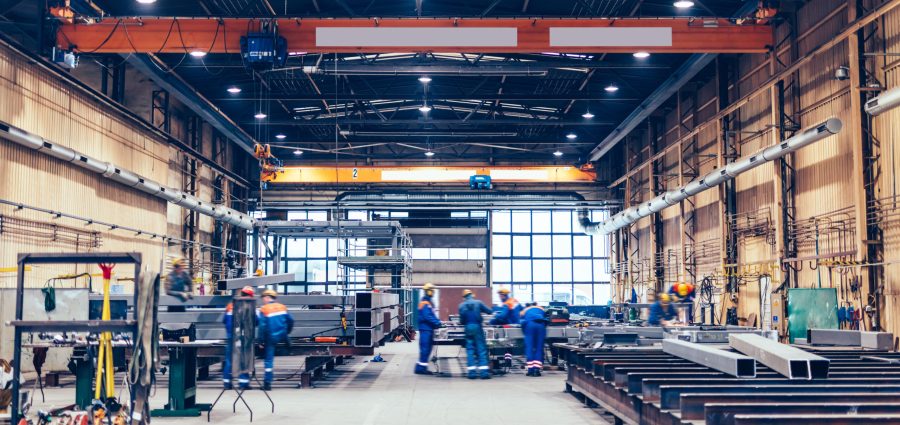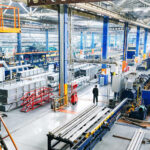The Institute for Supply Management released its monthly manufacturing Purchasing Managers Index (PMI) on June 3 reflecting May activity, which indicated that March’s return to expansion may have been a one-month anomaly followed by a return to contraction.
The PMI — regarded as a reliable indicator of overall U.S. industrial economy health — regressed for a second straight month in May, falling 0.5 percentage points from April to 48.7%.
Economists polled by Reuters had forecasted a May PMI of 49.6%.
The PMI has been in contraction territory (anything below 50.0%) for most of the past two years at 18 of the past 19 months through May.

In the PMI’s 10 factoring indices, the May reading was impacted by a major drop in new orders — its largest one-month decline in nearly 2 years. Meanwhile, the index for prices fell back considerably from its highest reading since mid-2022. Backlog of orders had a notable decline, while employment saw a healthy increase.
“Demand remains elusive as companies demonstrate an unwillingness to invest due to current monetary policy and other conditions,” ISM Manufacturing Business Survey Committee Chairman Timothy Fiore commented on the May report. “These investments include supplier order commitments, inventory building and capital expenditures. Production execution continued to expand but was essentially flat compared to the previous month. Suppliers continue to have capacity, with lead times improving and shortages not as severe.”
Click the chart for a larger version
Fiore added that 55% of manufacturing gross GDP contracted in May, up from 34% in April. Meanwhile, the share of sector GDP registering a composite PMI calculation at or below 45% — a good barometer of overall manufacturing weakness — repeated April’s 4%. Among the top six industries by contribution to manufacturing GDP in May, none had a PMI at or below 45%.
The seven manufacturing industries reporting growth in May were, in order: Printing & Related Support Activities; Petroleum & Coal Products; Paper Products; Textile Mills; Primary Metals; Fabricated Metal Products; and Chemical Products.
The seven industries reporting contraction in May were, in order: Wood Products; Plastics & Rubber Products; Machinery; Computer & Electronic Products; Furniture & Related Products; Transportation Equipment; and Food, Beverage & Tobacco Products.
Survey Commentary
Here is a sampling of PMI survey respondent commentary that ISM provided for May:
- “Conditions are improving as demand is starting to recover. Costs continue to be a major concern as suppliers that rapidly increased prices in the follow-up from COVID-19 are slow to return to pre-pandemic levels.” [Chemical Products]
- “Sales continue to exceed expectations in 2024. The forecasted dip in commercial vehicle production volumes appears to be avoided. Operational output is still strong, and the supply chain has the capacity to support. International supply chain risks have been minimized, but the frequency of supplier insolvencies or bankruptcies appears to be increasing.” [Transportation Equipment]
- “Order flow has stabilized. It took some customers longer to replenish their supply chain network after the fourth-quarter rush we commonly have. Order rates are expected to remain stable through August.” [Food, Beverage & Tobacco Products]
- “Some small indications of market improvement in China for our instruments and technology. Recovery is still slower than we had hoped, and macroeconomic uncertainty remains in Europe and the Middle East, as well as domestically in the U.S. with ongoing inflationary pressures and anticipation for the (upcoming) election.” [Computer & Electronic Products]
- “Market conditions have definitely softened. Thankfully, our backlog is strong and will get us through the year. When conditions improve as expected later this year, we will be in a good position to continue building the business. We are a manufacturer of automated packaging equipment for the food and beverage industry, and with a continued shortage of workers, our customers are requiring more and more automation.” [Machinery]
- “Business is slowing down — it has been a gradual decline for the last several months. We are not seeing new orders at last year’s level, or at this year’s budgeted levels.” [Fabricated Metal Products]
- “There has been a lot of volatility in sales. On average, our sales look flat, but the volatility is concerning.” [Electrical Equipment, Appliances & Components]
- “Business remained strong through the first quarter and has started strong for the second quarter. Commercial construction is still going well but on a regional basis, with the Southeast the strongest.” [Nonmetallic Mineral Products]
- “The major factor affecting our business is the uncertainty of the Federal Reserve’s handling of interest rates, which will affect our customers’ businesses, thereby affecting ours.” [Plastics & Rubber Products]
- “Business is stable, and orders have been consistent. We’re quoting new business for the factory, and automotive builds continue at averages but not near maximum outputs. Workforce is stable, with the turnover ratio dropping considerably. Salaries and hourly rates increasing to meet inflationary pressures.” [Primary Metals]
Related Posts
-
It followed a sizeable jump in January, reflecting broad weakened industrial demand.
-
Manufacturers across most industries expect revenue growth in the new year, according to a nationwide…
-
January's figure still indicated contraction for a 14th consecutive month, but at a much slower…






